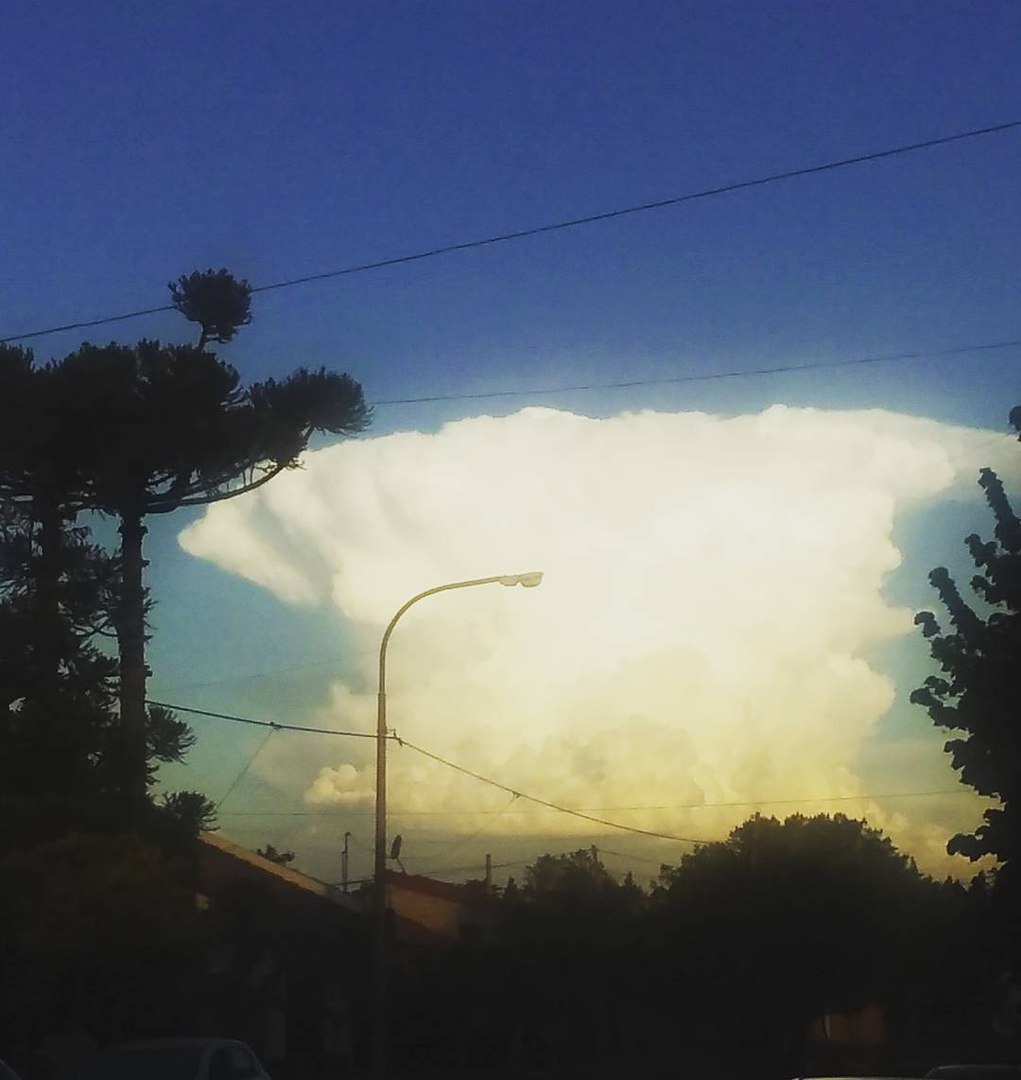

However, if you observe a storm with a large, dome-like overshooting top that lasts for a fairly long time (more than 10 minutes), chances are good that the storm's updraft is strong enough and persistent enough to produce severe weather. Most thunderstorms will have small, short-lived overshooting tops. The bubble is called an overshooting top. This will form a "bubble" of cloud sticking up above the rest of the anvil. If the storm you are watching has a vigorous updraft, a small portion of the updraft air will rise higher than the surrounding anvil. As the air (and cloud material) spreads out, the anvil is formed. The air (and cloud material) rapidly slows its upward motion after passing the equilibrium level. This level is called the equilibrium level.

Air (and cloud material) rising in the updraft reaches a point where it begins to slow down. Recall that the anvil is a flat cloud formation at the top of the storm. Most of the upper-level clues are associated with the thunderstorm's anvil. Many of these visual clues are interrelated, but for discussion's sake, we will classify these clues as upper-level, mid-level, and low-level features of the storm which is being observed. There are, however, a number of visual clues which can be used to gain an idea of a thunderstorm's potential strength and organization, and the environment in which the storm is developing. Information provided by the National Weather ServiceĪt first glance, it may seem difficult to tell a severe thunderstorm from a "garden variety" thunderstorm.


 0 kommentar(er)
0 kommentar(er)
